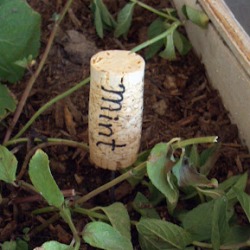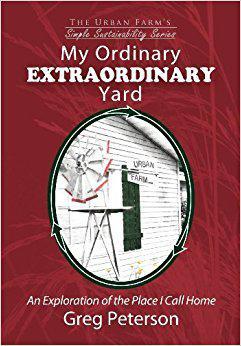Growing Culinary Herbs
By Kari Spencer
Do you say “herb,” “erb,” or perhaps “yerba?” No matter how you pronounce it, an herb is not just any plant! Herbs are useful plants, helpful in so many ways, from providing flavoring and fragrances to medicinal and religious applications. But their most common use is culinary—professional chefs and home cooks alike appreciate the value of fresh herbs in the kitchen, which add a range and depth of flavors that please the senses and make dishes more nutritious.
Ounce for ounce, fresh herbs are one of the most expensive items sold in grocery stores. But you can grow your own at home for pennies. It’s so simple to grow herbs, and with just a little bit of preparation, you can have your favorite herbs at your fingertips, in your kitchen window or right outside your door!

To get started, select two or three herbs that you like. You may want to choose the ones you purchase most often from the store. Though you can easily grow herbs from seed, when starting out, I prefer to begin with transplants. Buying a transplant allows you to touch, taste and feel the herb before you bring it home to ensure that you will like it. Growing transplants also provides you with a nearly instant harvest, as you can begin cutting a few leaves and tender stems within a few days of planting.
Herb transplants can be purchased from several sources. Basic culinary herbs are usually sold at hardware stores and ‘big box’ stores that have nursery departments. Chain nurseries will often have a wider selection of herbs, as will local nurseries that generally are more reliable sources of plants that are in season for your area. Check your local public gardens and arboretums for unusual and locally adapted varieties. Finally, shop at neighborhood farmers’ markets or join your local herb association, both of which often sell harder-to-find herbs grown by enthusiasts.
Herb transplants are versatile, and they will thrive if you plant them in your garden or in containers indoors or out. In any case, drainage is the key! Add plenty of mulch or compost to your garden soil. And if your soil is heavy or has a clay texture, add a generous portion of pumice or perlite. A good ratio is 1/3 native soil, 1/3 compost and 1/3 pumice or perlite. For containers, substitute potting soil for the native soil in the mixture, and make sure the pot has a drainage hole.
Once the soil is prepared, you are ready to plant. Dig a hole in the soil that is just as deep and twice as wide as the nursery pot. Carefully turn the nursery pot upside down and gently remove the herb, being careful not to damage the stem. Set the root ball of the transplant in the planting hole and backfill with soil. The top of the root ball should be even with the soil so that your plant is neither sitting too high in the pot, nor buried too low. Water the plant to settle the soil and add more if you notice any sunken areas.
Caring for herbs is easy. Water herbs deeply so that the entire root mass gets wet. Remember that herbs do not like to have ‘wet feet,’ so allow them to dry out somewhat in between. You will know that it is time to water again when the top few inches of soil feel dry to the touch. Most herbs do not need much fertilizer, but if you notice that the leaves are fading in color from deep green to a lighter shade, apply nitrogen fertilizer, such as fish emulsion, blood meal, or any balanced organic fertilizer. Finally, if you notice that your indoor herbs are looking washed out or spindly, with long stems and few leaves, move them into an area that receives more sunlight.
You can begin to harvest a few leaves almost immediately. In fact, when you plant your herbs, give them a little trim right away to encourage branching and more vigorous growth. A good rule of thumb is to harvest a few leaves regularly, and avoid taking more than 1/3 of the plant at any given time. Herbs taste best just before they flower, and gardeners often pinch off flowers as they appear in order to keep the aromatic oils concentrated in the leaves. This is a good practice to improve the flavor of most herbs, except for mint, which tastes best in full flower.
Preserve herbs by freezing or drying them. To freeze herbs, cut, wash and dry their leaves and small stems. Next, lay them in a single layer on a parchment-lined cookie sheet and place them in the freezer. When they are frozen solid, quickly transfer them to a storage container and return them to the freezer. By freezing them in this manner, they won’t stick together, and you can remove just the amount you need at any given time.
To dry herbs, cut long stems, then wash and tie them together. Hang them upside down in a paper bag. When they are completely dry and brittle, gently crush the bag. Herb pieces will be neatly collected in the bag. Store them in an air-tight glass jar. Make the most of the herbs you grow by using the tender stems and flowers, which are usually just as edible and tasty as the leaves.
When the weather is cool, plant chives, cilantro, dill, mint, parsley, rosemary, sage, and thyme. During warmer months, plant basil, chilis, lavender, lemongrass, summer savory, and oregano. Most herbs are grown as seasonal annuals, lasting only for a season. Harvest them often while they are in your garden. After a few months, annual herbs naturally begin to fade and need to be replaced. So enjoy them to the fullest while they’re at their peak!
 Kari Spencer is a Master Gardener volunteer and the founder of The Micro Farm Project, a tiny urban farm in the heart of Phoenix, AZ. A former elementary school teacher, she currently enjoys teaching adults, spreading her passion for gardening, cooking and small livestock. She shares the farm with her husband, Lewis, their four daughters, and a host of chickens, turkeys, sheep, goats, rabbits and quail. Check out her blog!
Kari Spencer is a Master Gardener volunteer and the founder of The Micro Farm Project, a tiny urban farm in the heart of Phoenix, AZ. A former elementary school teacher, she currently enjoys teaching adults, spreading her passion for gardening, cooking and small livestock. She shares the farm with her husband, Lewis, their four daughters, and a host of chickens, turkeys, sheep, goats, rabbits and quail. Check out her blog!







